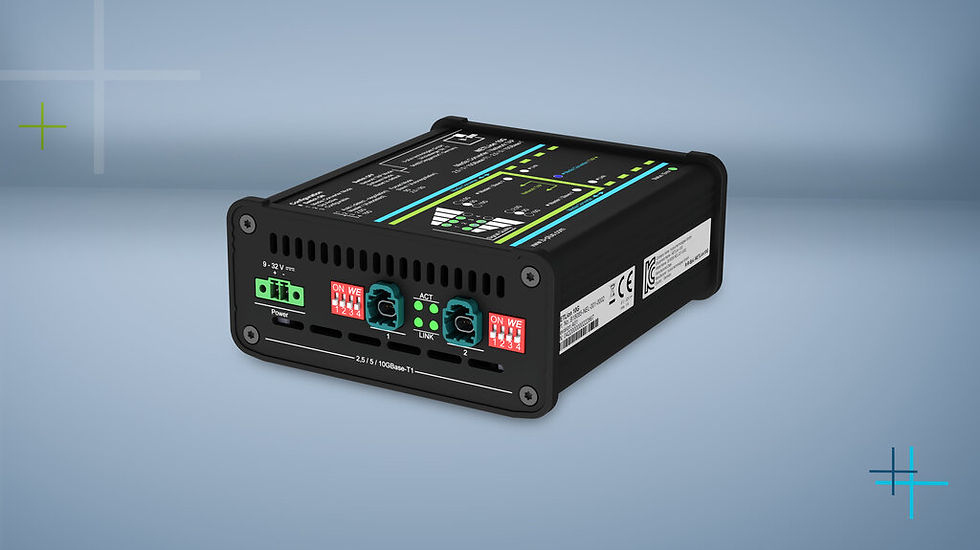What are the Key Features of the Upgraded NETLion Automotive Ethernet Development Tool?
- Natalia Sousa
- Feb 10
- 2 min read
With advancing technology such as the development of Software Defined Vehicles, along with more complex ADAS systems, the demand for high-performance development tools has never been greater. Automotive Ethernet is quickly becoming standard, and media converters are an engineer's first go-to tool for testing and validating their automotive Ethernet networks. Ethernet networks use star topology, so there is no single point to monitor an entire network. Engineers need to connect an automotive Ethernet connection to a standard Ethernet connection, which usually requires a media converter to get the traffic to the engineer's PC or monitoring device.
The more complex the system, the higher the speed rates needed. For example, high-resolution sensor technology that requires high frame rates, such as high-resolution 4K cameras, often finds speeds of 100 or 1000 Mbit/s insufficient. Data can be lost if the data transfer speed is not suitable. With the 2.5G, 5G, and 10Gbit/s advanced media converters like the NETLion 10G, b-plus says it closes this gap and continues to ensure reliable data transfer without data loss. Unlike most media converters which are single converters, the NETLion converts up to two BASE-T1 signals to Standard PC Ethernet.

Ethernet converters are used whenever automotive Ethernet is to be converted to standard PC Ethernet. The NETLion can be used in two modes. In media converter mode, it converts up to two 2.5G, 5G, or 10G signals to PC Ethernet and thus supports multiple standards with one device. In TAP mode, data can be decoupled from both directions of transmission and read out separately from each other. Users can decouple each connected device individually, examine it, and precisely trace and assign any errors.
The monitoring of safety-relevant systems in the vehicle is only possible with reliable and precise data. "We only operate on layer 1, which means that there is no modification of the data streams," explains Stefan Lobmeier, Product Manager of NETLion. Furthermore, the NETLion 10G has a very low and well-defined latency due to its real-time transmission, which ensures reliable time synchronization of the data.
To make the use of the NETLion 10G as easy as possible, there are several options available for configuration. The simplest one is done via the DIP switches on the hardware. Users can start immediately without any additional software. The converter can be configured easily via the Master/Slave mode.
The producer of the NETLion, b-plus also offers their standard 100 / 1000 BASE T1S (double) media converter, and for a limited time, they are offering a free upgrade to include the Network TAP feature (Test Access Point), In this operating mode , data can be decoupled from both transmission directions and read out separately from each other. The NETLion is competitively priced, supplied in a durable case, and due to its multiple functionalities, is nicknamed the Swiss Army Knife of media converters. To find out more about the offer, please see the link here
Comentários